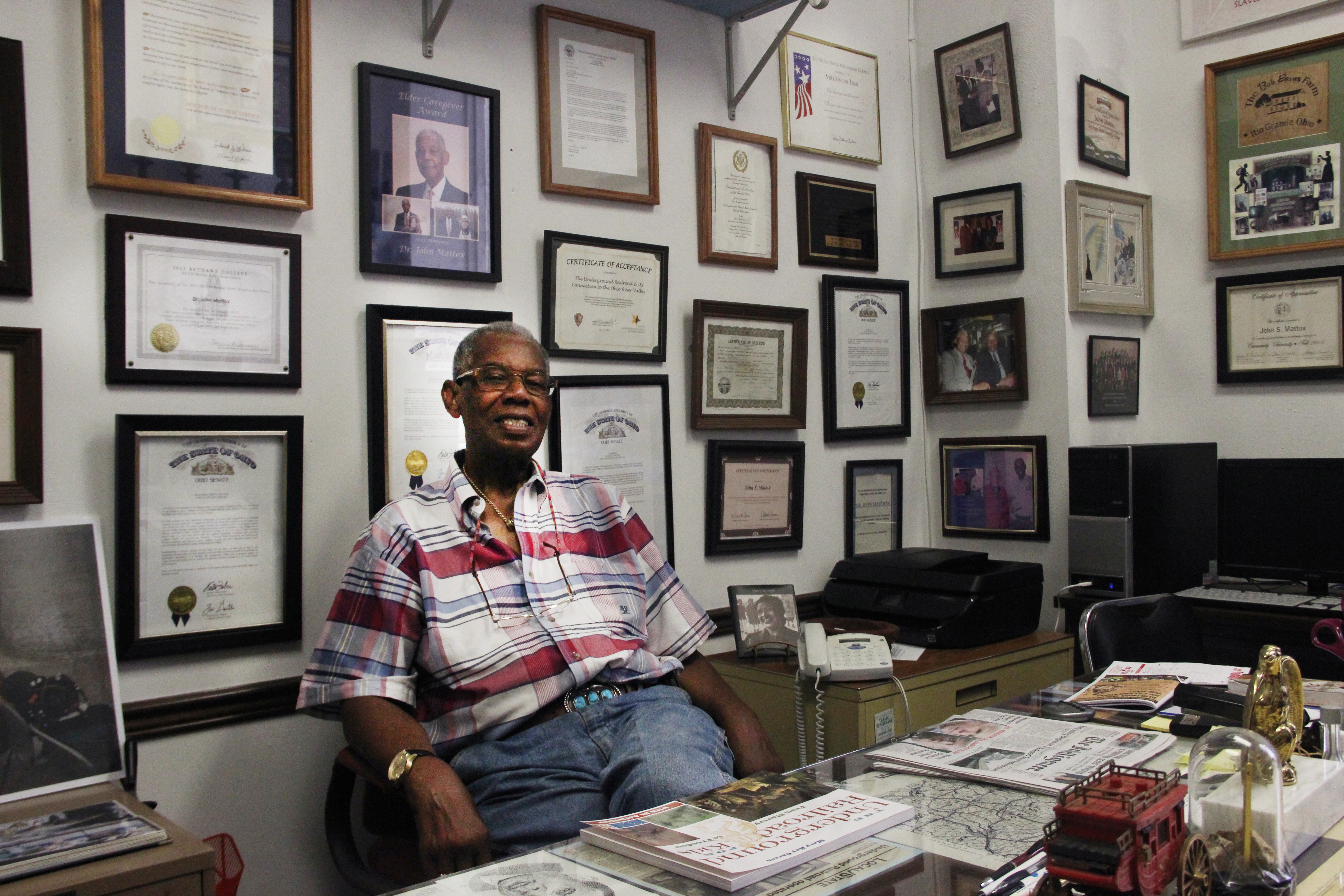
Children’s books and old yoke worn by slaves during the Middle Passage can be found among other mementos of history inside a building on the corner of East High and Market streets in Flushing.
“There are still thousands and thousands of stories to be told about the system called the Underground Railroad,” says John S. Mattox, a lover of history and curator of the Underground Railroad Museum in Flushing.
The Underground Railroad Museum at 121 East High Street holds the story of Benjamin Lundy, an abolitionist who left a mark on Belmont County with his dedication to freedom for all people.
Who was Benjamin Lundy?
Lundy was born in Sussex, New Jersey. As a young man, he started an apprenticeship as a saddler in Wheeling, Virginia, which later became West Virginia. In Benjamin Lundy and the Struggle for Negro Freedom, author Merton L. Dillon writes that Lundy saw slaves being marched down the street from slave pens to be auctioned off. After he married his wife in 1815, he moved to St. Clairsville, and Lundy set forth to take action against the injustices he witnessed.
 “I have long had [this cause] in contemplation,” Lundy wrote, according to Dillon’s book, “and have resolved, and fully determined, never to lay it down while I breathe, or until the end be attained.”
“I have long had [this cause] in contemplation,” Lundy wrote, according to Dillon’s book, “and have resolved, and fully determined, never to lay it down while I breathe, or until the end be attained.”
In 1816, the Union Humane Society began. The society, one of the first of its kind in the area, was an appeal to the public to eliminate slavery, Mattox says. The group started with five people and quickly grew to more than 500.
In Mount Pleasant, in 1821, the prospectus for Lundy’s Genius of Universal Emancipation, a newspaper dedicated to slavery, was published. On some occasions, Lundy resumed work as a saddler once again to pay for the expenses of printing the Genius. He walked from Mount Pleasant to Steubenville distributing the papers.
Lundy continued the fight until he died at the age of 50.
How Lundy’s story lives on
The Underground Railroad Museum started back in 1984. Mattox previously showcased different pieces of history in his insurance company office to draw people in the door.
The collection began with his wife, Rosalind, who died six years ago. Mattox says she still is his “journey director.” They stopped at historical sights while traveling. “When you turn off when you see those signs, you never know what you’re going to run into,” Mattox says.
When people stop in the museum for the first time, Mattox says some are surprised, especially if he can tell them something new about their culture.
“This is a different type museum,” Mattox says. “I let you feel. I let you touch. Because when you feel a yoke that’s been around someone’s neck 200 years ago, it gives you a different understanding of American history.”
Mattox’s Lundy presentation is one of his favorites to give. He added that it is admirable how Lundy kept moving forward with his fight despite pressure from outside groups—even when he was attacked by mobs, the abolitionist continued.
“He kept doing his thing because he realized [in] Quakerism, you follow God’s law,” Mattox says. “You don’t follow man’s law.”